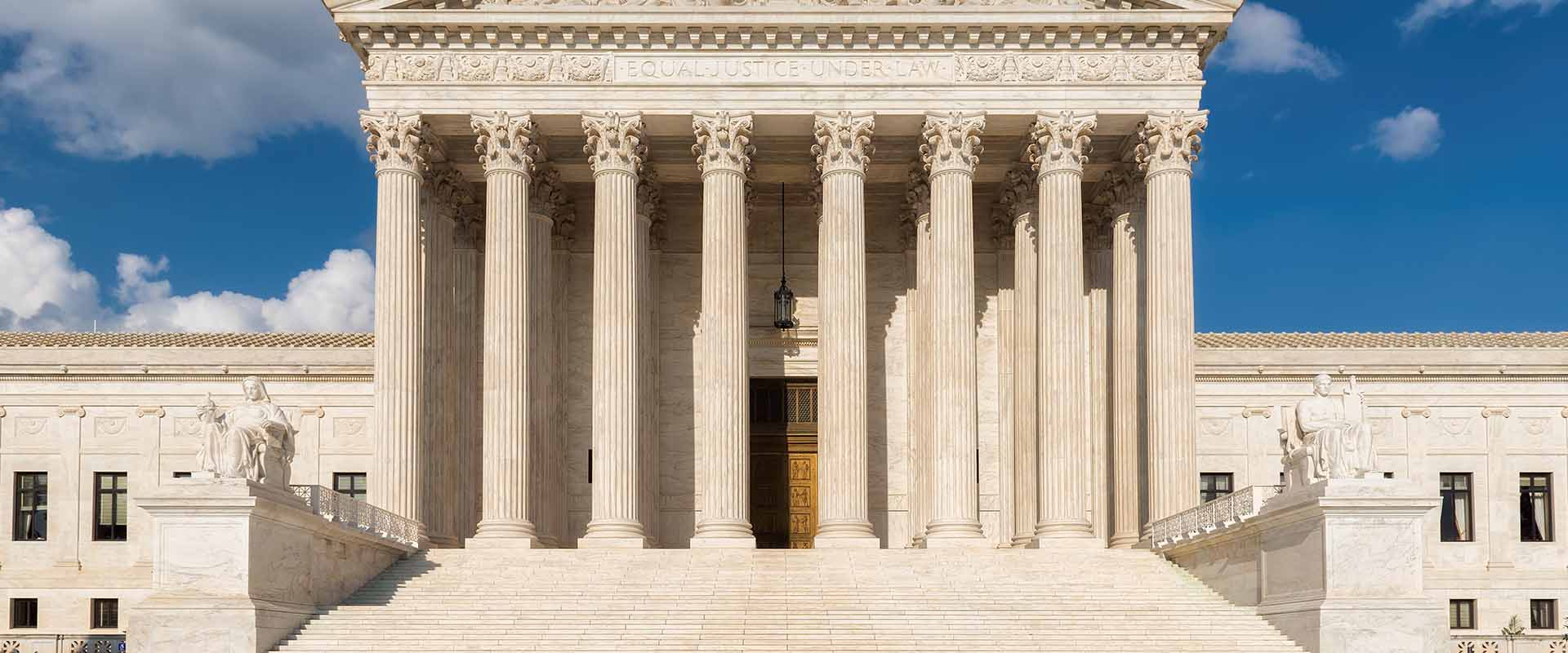California Whistleblower Retaliation Claims Subject to Statutory Test Rather than Higher Federal Standard

March 2022
Number 13
In Lawson v. PPG Architectural Finishes, Inc. (2022) 12 Cal.5th703, the California Supreme Court determined that the proper method for presenting and evaluating a claim of whistleblower retaliation under Labor Code section 1102.5 is the framework prescribed by statute in Labor Code section 1102.6 rather than the well-established burden shifting framework set forth in McDonnel Douglas Corporation v. Green (1972) 411 U.S. 792.
Background
From April 2015 until he was fired in 2017, employee Wallen Lawson worked for PPG Architectural Finishes, Inc. (PPG). While Lawson initially received positive evaluations for his work performance, those ratings began to plummet as time went on. Eventually, PPG placed Lawson on a performance improvement plan. During that same time, Lawson’s supervisor began ordering him to mistint paint, which Lawson believed to be an unethical practice. Lawson filed two anonymous complaints with PPG. While PPG eventually told Lawson’s supervisor to discontinue the practice, he continued to directly supervise Lawson. A few months later, after determining that Lawson had failed to meet the goals outlined in his performance improvement plan, Lawson’s immediate and higher-level supervisors recommended that he be fired. PPG subsequently fired Lawson.
While Lawson contended that PPG fired him because he blew the whistle on his supervisor’s fraudulent practices, PPG argued that it had fired Lawson because of his poor performance. To adjudicate Lawson’s whistleblower retaliation claim under Labor Code section 1102.5, a federal district court applied the three-part McDonnell Douglas burden-shifting test. Under that approach:
On appeal to the Ninth Circuit, Lawson argued that the district court should have applied the framework prescribed by statute in Labor Code section 1102.6 to adjudicate his claim. Section 1102.6 describes the applicable substantive standards and burdens of proof for both parties in a section 1102.5 retaliation case:
California Supreme Court Decision
The California Supreme Court held that section 1102.6, and not McDonnell Douglas, provides the governing framework for the evaluation of whistleblower retaliation claims brought under section 1102.5. Specifically, the Court held that section 1102.6 did not require employees to satisfy the third prong of the McDonnell Douglas inquiry—i.e., proving that the employer’s proffered legitimate reasons were pretextual—in order to prove that retaliation was a contributing factor of the adverse employment action under section 1102.6. Placing this burden on whistleblowing employees would be inconsistent with the Legislature’s purpose in enacting section 1102.6, which was to “encourage earlier and more frequent reporting of wrongdoing by employees and corporate managers when they have knowledge of illegal acts” by “expanding employee protection against retaliation.” Section 1102.6 specifies the burden of each party in a whistleblower retaliation case, and the Supreme Court declined to add requirements not imposed by the Legislature.
Takeaways
In contrast to some holdings in prior California case law, whistleblowing employees no longer need to satisfy the third prong of the McDonnell Douglas test to succeed on their whistleblower retaliation claims. Rather, courts should strictly apply the burdens set forth in section 1102.6. Although not requiring an employee to satisfy the third prong of the McDonnell Douglas test may make it more difficult for employers to obtain summary judgment on such claims, the Supreme Court recognized that employers still may use the “same-decision” defense of section 1102.6 via summary judgment.
If you have any questions about the Supreme Court decision in Lawson or about section 1102.5 whistleblower retaliation claims, please contact the authors of this Client News Brief or an attorney at one of our eight offices located statewide. You can also subscribe to our podcasts, follow us on Facebook, Twitter and LinkedIn or download our mobile app.
Number 13
In Lawson v. PPG Architectural Finishes, Inc. (2022) 12 Cal.5th703, the California Supreme Court determined that the proper method for presenting and evaluating a claim of whistleblower retaliation under Labor Code section 1102.5 is the framework prescribed by statute in Labor Code section 1102.6 rather than the well-established burden shifting framework set forth in McDonnel Douglas Corporation v. Green (1972) 411 U.S. 792.
Background
From April 2015 until he was fired in 2017, employee Wallen Lawson worked for PPG Architectural Finishes, Inc. (PPG). While Lawson initially received positive evaluations for his work performance, those ratings began to plummet as time went on. Eventually, PPG placed Lawson on a performance improvement plan. During that same time, Lawson’s supervisor began ordering him to mistint paint, which Lawson believed to be an unethical practice. Lawson filed two anonymous complaints with PPG. While PPG eventually told Lawson’s supervisor to discontinue the practice, he continued to directly supervise Lawson. A few months later, after determining that Lawson had failed to meet the goals outlined in his performance improvement plan, Lawson’s immediate and higher-level supervisors recommended that he be fired. PPG subsequently fired Lawson.
While Lawson contended that PPG fired him because he blew the whistle on his supervisor’s fraudulent practices, PPG argued that it had fired Lawson because of his poor performance. To adjudicate Lawson’s whistleblower retaliation claim under Labor Code section 1102.5, a federal district court applied the three-part McDonnell Douglas burden-shifting test. Under that approach:
- First, the employee must establish a prima facie case of unlawful discrimination or retaliation.
- Second, the employer bears the burden of articulating a legitimate reason for taking the challenged adverse employment action.
- Third, the burden shifts back to the employee to demonstrate that the employer’s proffered legitimate reason is a pretext for discrimination or retaliation.
On appeal to the Ninth Circuit, Lawson argued that the district court should have applied the framework prescribed by statute in Labor Code section 1102.6 to adjudicate his claim. Section 1102.6 describes the applicable substantive standards and burdens of proof for both parties in a section 1102.5 retaliation case:
- First, the employee must “demonstrate[] by a preponderance of the evidence” that the employee’s protected whistleblowing was a “contributing factor” to an adverse employment action.
- Second, once the employee has made that necessary showing, the employer bears “the burden of proof to demonstrate by clear and convincing evidence” that the alleged adverse employment action would have occurred “for legitimate, independent reasons” even if the employee had not engaged in protected whistleblowing activities.”
California Supreme Court Decision
The California Supreme Court held that section 1102.6, and not McDonnell Douglas, provides the governing framework for the evaluation of whistleblower retaliation claims brought under section 1102.5. Specifically, the Court held that section 1102.6 did not require employees to satisfy the third prong of the McDonnell Douglas inquiry—i.e., proving that the employer’s proffered legitimate reasons were pretextual—in order to prove that retaliation was a contributing factor of the adverse employment action under section 1102.6. Placing this burden on whistleblowing employees would be inconsistent with the Legislature’s purpose in enacting section 1102.6, which was to “encourage earlier and more frequent reporting of wrongdoing by employees and corporate managers when they have knowledge of illegal acts” by “expanding employee protection against retaliation.” Section 1102.6 specifies the burden of each party in a whistleblower retaliation case, and the Supreme Court declined to add requirements not imposed by the Legislature.
Takeaways
In contrast to some holdings in prior California case law, whistleblowing employees no longer need to satisfy the third prong of the McDonnell Douglas test to succeed on their whistleblower retaliation claims. Rather, courts should strictly apply the burdens set forth in section 1102.6. Although not requiring an employee to satisfy the third prong of the McDonnell Douglas test may make it more difficult for employers to obtain summary judgment on such claims, the Supreme Court recognized that employers still may use the “same-decision” defense of section 1102.6 via summary judgment.
If you have any questions about the Supreme Court decision in Lawson or about section 1102.5 whistleblower retaliation claims, please contact the authors of this Client News Brief or an attorney at one of our eight offices located statewide. You can also subscribe to our podcasts, follow us on Facebook, Twitter and LinkedIn or download our mobile app.
As the information contained herein is necessarily general, its application to a particular set of facts and circumstances may vary. For this reason, this News Brief does not constitute legal advice. We recommend that you consult with your counsel prior to acting on the information contained herein.




